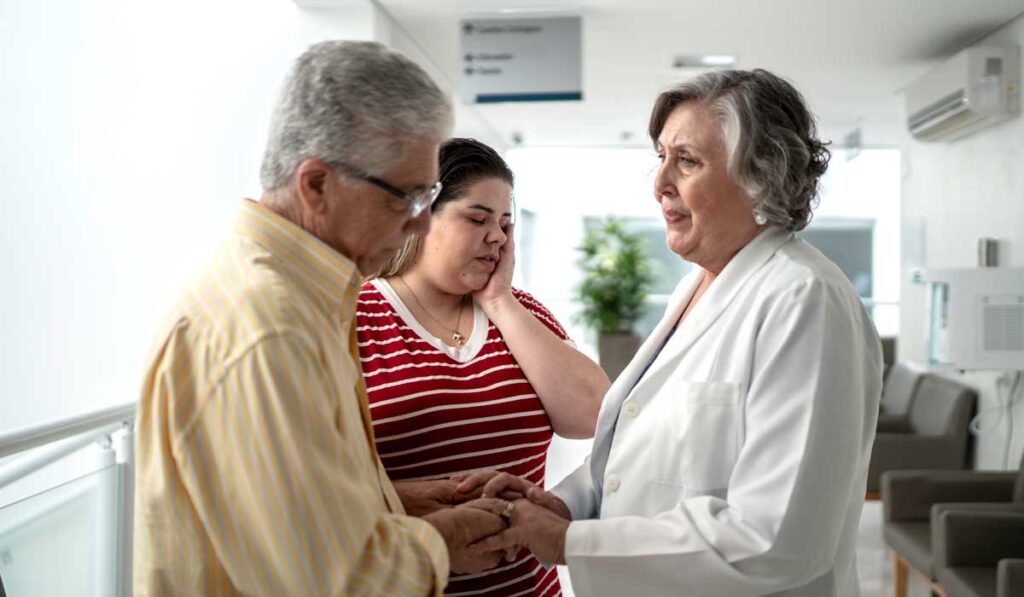The number of adult organ donors in the U.S. has increased over time, but pediatric deceased organ donors remain scarce, with declining numbers, a trend that has significant downstream implications for children awaiting organ transplantation.
Aware that nearly one out of every five children listed for heart transplantation will die, Justin Godown, M.D., associate medical director of the pediatric heart transplant program at Monroe Carell Jr. Children’s Hospital at Vanderbilt, has been working on the forefront of efforts to increase pediatric organ donations and improve the availability of donor hearts, a process typically facilitated by organ procurement organizations (OPOs).
“A key component of our effort to achieve a higher donation rate is to examine the behavioral aspects of family decision-making when approached by staff from an OPO,” Godown said. “Researching the different approaches to this challenging conversation will guide efforts to implement national quality- improvement initiatives to optimize the availability of pediatric donor organs.”
Approximately 2,000 children 18 or younger in the U.S. are on lists waiting for a variety of organs, and a quarter of those waiting are under age 5.
Currently, Godown and colleagues are examining the factors involved in such parental decisions under a grant from the Enduring Hearts Foundation, where Godown is a scientific advisor.
“The premise of this grant is to identify the most successful strategies for approaching potential pediatric organ donors,” he said.
“There is wide variability in donor consent rates across OPOs. While population demographics clearly play a role in this variation, this does not entirely explain the differences. We hypothesize that some OPOs employ more successful donor recruitment strategies than others, and this project aims to identify the most promising approaches.”
Infants Are Shortchanged
Godown is first author on a Pediatrics study that found organ donation consent rates were lower in children compared to adults.
The researchers found organ donation consent rates to be 74.5 percent among the families of deceased children overall, but that rate steadily declines as the age group drops. Directly related to patient age, the lowest consent rates were among parents of infants.
According to the U.S Department of Health and Human Services, only about 340 of 13,864 organ donations were from deceased children under age five in 2021. A decade earlier, in 2011, that number was similar at 341 but made up a larger portion of the 8,143 deceased donors.
Adult organ donations have been on the rise. A nationwide initiative launched in 2003, the Organ Donation Breakthrough Collaborative, was hugely successful in increasing the donor pool. The effort was launched in conjunction with state motor vehicle departments’ promotion of organ donation with driver’s license renewals.
Pediatric organ donation lacks similar avenues for reaching the public, since registration as an organ donor provides first-person consent in the adult population. Without this mechanism, virtually all consent for pediatric organ donation is obtained from next-of-kin. Both the emotions surrounding the decision and the causes of death are naturally different in the pediatric population, Godown says.
“While we are aiming to replicate the success of the Organ Donation Breakthrough Collaborative in the pediatric population, the optimal approach to a potential pediatric deceased organ donor is likely different than with an adult, and may in fact vary based on the specific circumstances.”
Broad Spectrum of Variables
Godown’s team found pediatric deceased donor consent rates among most of the 58 U.S. OPOs range from approximately 63 to 91 percent, with increased variability in younger donors.
Using 2008-2019 data from the Scientific Registry of Transplant Recipients, the researchers looked at records on 11,829 eligible pediatric deaths across OPOs. After adjusting for demographic factors that can impact willingness to consent, they still found significant variation across OPOs. The team identified a number of factors independently associated with successful consent, with the specific OPO playing a key role.
The research suggests optimal donor recruitment strategies may highly correlate with behavioral factors like the timing of the approach, who talks with the family, and how they pose the question.
Ongoing Investigation
Now, the team is collaborating with the Association of Organ Procurement Organizations (AOPO) to distribute surveys to the regional OPO staff members who approach families for consent.
“OPO staff who request organ donor consent come from varying backgrounds. We want to better understand their perceptions of the best donor-recruitment strategies,” Godown said.
At the upcoming AOPO annual meeting, focus groups will engage survey participants on best practices and identify and examine strategies for successful recruitment.
“We expect that the feedback we get from these surveys and focus groups will help us formulate a consensus statement to guide the optimal approach to potential pediatric donors,” Godown said. “We plan to partner with their leaders to incorporate best behavioral practices and increase the availability of donor organs nationwide.”






